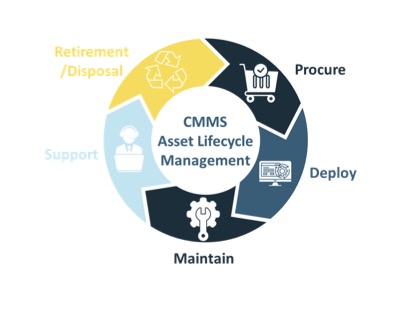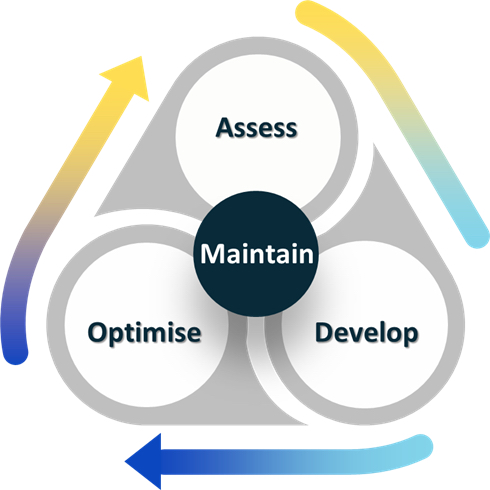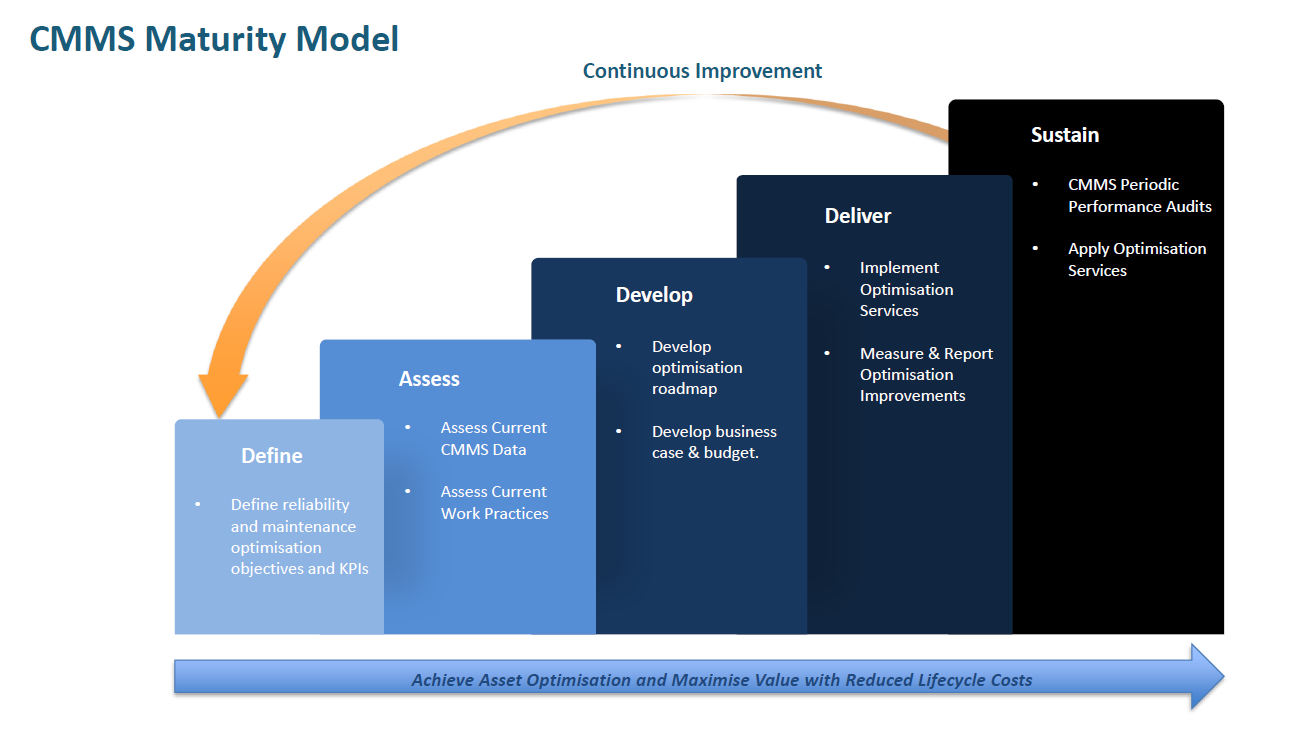Maintenance management software optimisation: A four-phase service model
Published: 07 December, 2022
PWE spoke to Donal Bourke, Sales Director, and Stephen Davis, Marketing Director, at PEMAC who explain how optimisation services can increase the return on investment of CMMS software projects and support maintenance improvement programmes.
Software products, like all products, are built with an end user in mind. Human beings have a strong sense of inertia, natural resistance to push back on something they don’t understand, fear, or don’t want. This natural sense of inertia contributes to one of the single biggest reasons for software project failure - a lack of user adoption. Another reason why employees within an organisation may be reluctant to use a specific software system can often be down to usability issues, complexity, or a lack of specific features or functionality – in other words, the software is not ‘optimised’ to meet the functional requirements of their job roles.

Fig 1: CMMS Asset Lifecycle
A CMMS (Computerised Maintenance Management System) is no different from any other software, and while there have been many innovations throughout its product development lifespan, the core functionality offered is relatively common across all vendors. As a result, it can be extremely challenging for CMMS vendors to differentiate themselves based on their software offerings alone.
Recognising these facts, Donal Bourke, Sales Director, and Stephen Davis, Marketing Director, at PEMAC, a UK and Irish-based CMMS software provider, highlight that it has recently developed and introduced a new ‘CMMS Optimisation’ service offering to complement its market-leading CMMS software.
This value-added consultancy service ensures that software projects are ultimately successful and that clients can realise the full value of their CMMS investment. This value (or return on investment) often takes the form of quantifiable and measurable improvements in reliability, maintenance cost reduction, increased operational efficiencies, and reduced safety risks. CMMS optimisation services are independent of the underlying CMMS.
Software technology and span the complete Asset lifecycle of CMMS software from procurement through to disposal. PEMAC’s ‘Optimisation Service’ is a four-phase service lifecycle model designed as a framework to assist organisations to improve the maturity of their CMMS and maintenance continuousimprovement programmes. Each phase of the model can be applied during any phase of an organisation’s CMMS Asset lifecycle.
Assess
The most important phase irrespective of where an organisation resides in its CMMS Asset Lifecycle is the ‘Assess’ phase. All improvement programmes start with knowing the ‘As Is’ situation and this is achieved through the ‘Assess’ phase of the optimisation service. The ‘Assess’ phase is a short, focused assessment of performance against recommended best practices and compliance against the organisation’s internal standards. The insights gained during the ‘Assess’ phase help organisations determine the maturity of their maintenance strategy and standards and how they are or will be supported by CMMS software. These insights identify areas for improvement which are then supported by the additional services within the Optimisation Service Model.
Develop
The ‘Develop’ Phase builds on the insights gained in the ‘Assess’ phase by designing and implementing improvements across maintenance and calibration practices through optimising CMMS data and configuration. During this service phase, organisations can successfully embrace the digitalisation of maintenance, reducing paper-based processes and approvals by implementing digital forms and workflows within their CMMS software. In addition, the ‘Develop’ phase delivers services that define and implement relevant KPIs, reporting processes, and management dashboards for maintenance activities. These services and deliverables provide insights into the success of continuous improvement measures.

Fig 2: The PEMAC Optimisation Service Model
Optimise
The ‘Optimise’ phase improves asset and equipment reliability and availability through the optimisation of CMMS optimisation and site practices, maximising an organisation’s Return on Investment (ROI). During the ‘Optimise’ phase, CMMS consultants review and align routines for optimal maintenance scheduling, they assess and redefine job specifications to optimise maintenance task lists and adjust organisation maintenance practices and procedures to preserve compliance while achieving maximum flexibility for operations.
Maintain
The ‘Maintain’ phase applies services to ensure that the CMMS remains optimised, as organisations naturally change and evolve. This phase of the optimisation service model involves scheduled performance audits of the CMMS software and maintenance programme initiatives to ensure best practices are maintained and embedded within the organisation. Remote optimisation services can be enabled to allow consultants or engineers access to the CMMS to perform optimisation services and to assist with data and reliability analysis.
CMMS Continuous Improvement
While the above four-phase service model is best applied sequentially, it can also be tailored depending on what stage an organisation is within the CMMS Asset Lifecycle. As organisations change and implement new assets, processes and practices within their maintenance programmes, they should continually assess the maturity of their CMMS and maintenance improvement programmes. Depending on an organisation’s specific level of CMMS maturity and user adoption, slight optimisation service interventions might be required to maintain best practices for example, a mature organisation may simply require periodic CMMS performance audits that enable it to measure (and perhaps redefine) its maintenance optimisation objectives and KPIs.
Figure 3 illustrates a CMMS maturity model with a continuous feedback loop that organisations can adopt with optimisation services to maximise the value of their CMMS software investment.

Fig 3: CMMS Maturity Model
https://www.linkedin.com/company/pemac/






